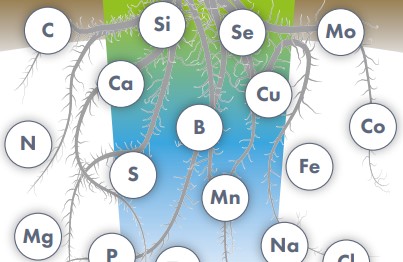As margins are ever more squeezed on farm, over the last twelve months we have seen a significant increase in farmers looking for a more sustainable and cost-effective way of applying nitrogen to their land while reducing farm inputs. Fish hydrolysates are now playing a key role in that search for solutions and are proven to stimulate soil life and supply nitrogen without the negative impacts attributed to synthetic nitrogen fertilisers.
What is a fish hydrolysate?
Hydrolysation is the process of breaking complex proteins into their component amino acids. These can then be utilised by both the soil microbiome and the plant directly. Fish hydrolysates contains a full range of naturally balanced amino acids and fatty acids. Rich in essential nutrients such as nitrogen, phosphorus, and potassium, they also provide important micronutrients like calcium, magnesium and trace elements in a bioavailable formulation establishing a sound basis for any crop nutritional plan. Fish hydrolysate is also considered more environmentally friendly than synthetic fertilisers, as it is a by-product of the fish industry produced from the transformation of materials that would otherwise go to waste.

How does fish hydrolysate benefit your soil and crops?
Plants are basically factories taking in CO2 from the atmosphere and converting it into oxygen and sugars. However, they can’t do this efficientlywithout the assistance of the soil bacteria and fungi. Fish hydrolysate benefits that cycle of conversion by providing a highly nutritious food source for those microorganisms which further convert nutrients into a form that is readily available to the plant. Using fish hydrolysates as an organic soil improver helps to boost and replenish the nutrient content in the soil, promoting plant health and optimal growth.
The key benefits to using fish hydrolysates include:
- Organic matter and soil conditioning: Fish hydrolysate promotes a biologically active soil fostering beneficial microorganisms and earth worms. With the creation of a biologically active substrate, the soil exhibits better aeration, can retain moisture and releases nutrients in a biologically available form to the plants, contributing to increased stress tolerance in plants. Promoting better health and growth of the plants.
- Enhances nutrient availability: The nutrients in fish hydrolysates are readily available for plants and are easily absorbed through both foliar and root uptake. This results in improved nutrient uptake efficiency and enhanced plant nutrition.
- Stimulates plant growth and development: Fish hydrolysates contains natural growth-promoting substances, including amino acids and other beneficial compounds like chelated minerals. These biological active compounds can stimulate root development, enhance vegetation growth, encourage flowering and fruiting and improve overall plant vigour.

What is the importance of amino acids?
Over millennia the soil ecosystem has evolved to recognise decaying organic material, break it down into its constituent components and feed it back to the living plants in what we know today as the nitrogen cycle. In the last century and with the advent of farming with synthetic fertilisers and sprays, this delicate nitrogen cycle is disrupted because a lot of these fertilisers are applied as nitrates. Fish hydrolysate provides a nutrient source from which the soil ecosystem can reduce higher forms of nitrogen in its own time and when needed, rather than being bombarded with high levels of nitrate, the excess of which will ultimately end up in our ground water and rivers.
Each amino acid has specific functions and roles in plant metabolism, growth, and stress response. A balanced supply of essential amino acids is crucial for optimal plant growth and development. While plants can synthesize some amino acids on their own, they often require a supply of essential amino acids from external sources. One advantage fish hydrolysate has is that it contains all 20 amino acids needed for protein synthesis, which are key metabolites in the process of vegetal tissue formation and chlorophyll synthesis. They also play important roles in nitrogen transport and storage, and the regulation of plant growth and development.
Amino acid naturally occur in two forms L- and D-, fish hydrolysates contain both forms playing a key role in soil and plant health. L- amino acids can be taken up by the plant directly and are used for protein synthesis, whereas the D- amino acids are used in the building of cell walls by soil bacteria, which are crucial to soil health.
Over the last three years Sea2soil has been conducting various farms trials, with the participating farmers reporting an increase in biological activity in their soils, improved carbon capture and a decrease in the amount of synthetic nitrogen and other chemicals they need to apply. Also reported is that farmers are seeing an overall improvement in their return on investment. Sea2Soils Technical Sales Manager, Liz Brown says that, “Sea2Soil can play a key role in a farms total crop nutritional plan, as it provides a nutritional package which is complementary to a soils natural self-regulating activities. Sea2Soil can be incorporated into any farming system wanting to reduce their reliance on synthetic chemical and reducing input costs.”


